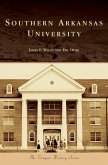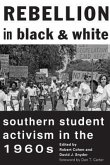In Statesboro, Georgia, two schools coexisted: one white and the other black. Yet, these schools were intertwined by their geographical location and the traditions of the segregated South. There are many glaring similarities between the white students of Georgia Southern University's forerunner, the First District A&M School, and the black students of the Statesboro Industrial and High School. Yet as happened all too often in the South as implementation of the federal court's desegregation orders took shape, "Negro" schools were downgraded or outright closed. Statesboro was no different. While, First District A&M became a regional university, Statesboro Industrial and High School was downgraded to a junior high school. In 1961, integration on the higher-education level at Georgia's flagship university captured national attention. Few works if any have examined desegregation in the context of non-flagship universities. Likewise, there is a misguided mythology that desegregation occurred quietly at Georgia Southern University: it's clear that while there was not the violence and rioting seen elsewhere in Southern universities, blacks were marginalized and did not feel welcome at the college. A passive group after the initial integration, blacks adopted tactics of protest and confrontation to empower themselves. Taking a page from the Civil Rights Movement, black students and faculty established organizations to confront discrimination and gain access to campus leadership positions. This is a story about the defeats, victories, struggles, and developments of blacks at Georgia Southern University.








